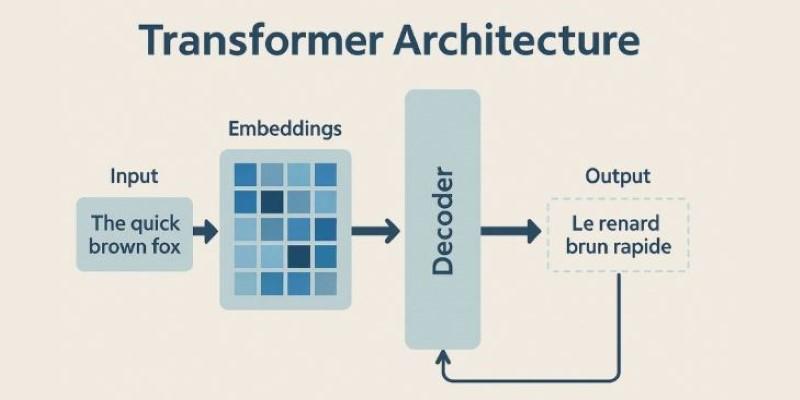Choosing the proper gradient boosting algorithm is crucial. While XGBoost and LightGBM are popular, CatBoost offers unique advantages. Developed by Yandex, CatBoost excels in handling categorical features and preventing overfitting. Understanding its innovations helps data scientists determine when to apply this robust algorithm to real-world data challenges.
Revolutionary Categorical Feature Handling
The most distinctive aspect of CatBoost's engineering lies in its approach to categorical variables. Conventional gradient boosting algorithms involve significant preprocessing of categorical input to turn it into numerical form, typically by applying one-hot encoding or label encoding, both of which may cause bias or damage information.
CatBoost is capable of overcoming this processing overhead by its new categorical encoding technique known as Target Statistics or Ordered Target Statistics. To define statistics, this method employs the category value of the target variable, but in such a manner that eliminates target leakage, which occurs naturally with naive target encoding methods.
The categorical features algorithm works with categorical items; it maintains running averages of targeted patterns and updates these values upon receiving new data points. This dynamic nature ensures that the encoding is flawless, reflecting the actual relationship between categorical variables and the target, thereby preventing overfitting to training data trends.
Automatic Feature Engineering

In addition to encoding, CatBoost builds combinations of features automatically out of categorical variables. The algorithm finds noteworthy interactions on the part of categorical features and forms new features based on them. The speed of developing a model is saved alongside numerous hours, and relevant relationships tend to be found automatically compared to those engineered through manual intervention (Guanglini and Domanova 4452).
Advanced Overfitting Prevention
CatBoost employs a variety of advanced measures to avoid overfitting, extending beyond the normal regularization used by other boosting algorithms.
Ordered Boosting
This algorithm also employs the Ordered Boosting method, which is an adaptation of the conventional gradient boosting model. CatBoost keeps distinct residuals for different sets of training data when constructing each tree, as opposed to utilizing the same residuals in all of them. This strategy will decrease overfitting, which also leads to overfitting by calculating gradients to train the tree using a diverse subset of the data specific to that particular tree.
Dynamic Boosting
CatBoost also employs dynamic boosting, which adjusts the learning process based on the complexity of the current model. The algorithm is safeguarded with increased regularization to prevent overfitting as the model becomes increasingly complex. This form of adaptation allows for ensuring the tradeoff between the complexity and the ability of generalization in the model.
Symmetric Tree Structure
CatBoost builds symmetric (balanced) trees, unlike other gradient boosting implementations, which may make use of traditional decision tree structures. The choice of design has several benefits for engineering:
- Symmetric trees are more memory-efficient and enable better CPU cache utilization during both training and prediction. The balanced structure also makes the trees more interpretable and reduces the risk of creating overly complex tree structures that might overfit to training data.
- The symmetric tree structure also enables efficient parallel processing during training. CatBoost can distribute the tree-building process across multiple CPU cores more effectively than algorithms using asymmetric tree structures.
Robust Prediction Quality
The engineering of CatBoost is centered on effective predictions of different cases of data. The algorithm has the following techniques used to increase the stability of prediction:
Minimal Variance Sampling
The algorithm employs minimal variance sampling in the selection of random subsets of features and data points. This is because it reduces the variation between model predictions, as it would otherwise vary under standard random sampling techniques, thus yielding consistent and dependable outcomes.
Built-in Cross-Validation
CatBoost features advanced cross-validation capabilities, which are beneficial for hyperparameter optimization and mitigating overfitting. The algorithm is capable of automatically adjusting its parameters using its internal cross-validation objective and does not require extensive manual hyperparameter tuning.
GPU Acceleration and Scalability
CatBoost engineering offers extensive support for GPUs, not only in acceleration. The GPU implementation of the algorithm is also designed to utilize the architectures of the GPUs effectively.
The GPU version does not sacrifice any of the advanced functionality of CatBoost, such as the use of categorical features and ordered boosting, and provides significant performance gains. Many, though not all, GPUs are supported in CatBoost, which makes it especially suitable for large-scale machine learning applications.
Memory Efficiency
The patterns of storage consumption for the algorithm are optimized both on the CPU and in the Ukrainian sectors. CatBoost features a memory-efficient data container and processing that reduces memory pressure compared to other gradient boosting packages. This is especially significant in cases of dealing with large data sets or operating in memory-intensive settings.
Production-Ready Features

Engineering CatBoost would focus on production deployment, taking into account several features that make it easier to transition between development and production:
Fast Inference
The algorithm's symmetric tree structure and optimized prediction code enable fast inference speeds. CatBoost models can make predictions efficiently even in latency-sensitive applications.
Model Interpretability
CatBoost provides comprehensive model interpretability features, including feature importance calculations, individual prediction explanations, and interaction analysis. These capabilities are built into the algorithm's core rather than being added as external tools.
Robust Handling of Missing Values
The algorithm includes sophisticated missing value handling that doesn't require preprocessing. CatBoost learns how to handle missing values during training and applies this knowledge consistently during prediction, reducing the risk of errors in production systems.
When CatBoost Excels
CatBoost particularly excels with datasets containing many categorical features, especially when these features have high cardinality. The algorithm's native categorical handling eliminates preprocessing complexity while often achieving better predictive performance than manually encoded features.
The algorithm also performs well on smaller datasets where overfitting is a primary concern. CatBoost's sophisticated overfitting prevention mechanisms often enable better generalization than other boosting algorithms on limited training data.
For applications requiring high prediction stability and interpretability, CatBoost's engineering choices provide advantages over algorithms that prioritize raw performance over robustness.
Conclusion
CatBoost is also of considerable benefit to those working in a variety of ML situations. Its exclusive management of categorical attributes eases the preprocessing and enhances performance. CatBoost offers the highest overfitting prevention, resulting in production-level performance that yields high robustness and reliability. Use it when there are few categorical properties, limited training information, and when predictable results that are stable and understandable are vital to production systems.











